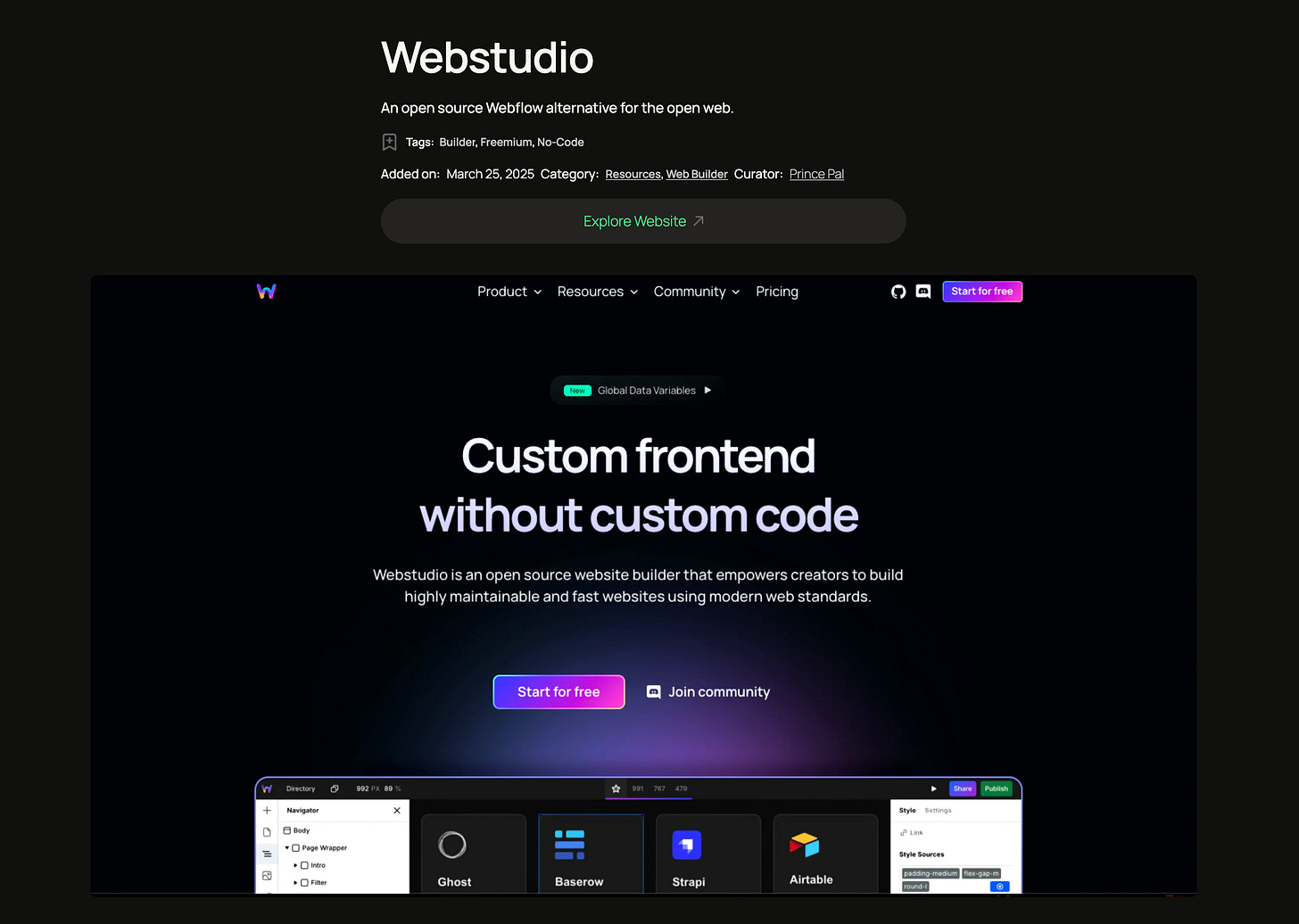Before You Trust AI to Build Your Website, Read This
Think AI can build you a perfect website? Think again. Here’s a blunt look at why today’s AI website builders fall short — and what you should know before trusting one with your next project.
💥 AI website builders: let’s be honest for a second.
I’ve tried almost all of them — Webflow, Framer, WordPress (an old friend?), Webstudio, V0, Bolt, Lovable… the list goes on, and maybe I’ve missed a few. Point is, I keep hoping one will surprise me. So far? None has.
Perhaps it sounds harsh, but honestly, nobody’s cracked the code for a genuinely helpful AI website builder yet.
👉 Webflow? Used to swear by it. Now it’s creeping into “enterprise-only” territory — expensive, buggy, oddly fragile if you’re a lone freelancer trying to make rent. Unless you’re up for duct-taping AWS S3 buckets, custom proxies, or weird workarounds at 2 AM… it’s… well, possible, but just barely.
👉 Framer? Looks shiny. I get it — the marketing is slick. I even fell for it for a while. It can also create visually appealing landing pages if you want some nice content. But try scaling it for real projects, robust design systems, or anything more than a one-shot site, and you’ll see the cracks. Oh, and the pricing’s drifting up too.
👉 And then there’s this new wave — V0, Lovable, Bolt. If you’ve tested them, maybe you know the feeling: same prompt in, same bland output out. It’s like they’re all reading each other’s homework and still failing the test.
Why does this happen? Maybe — I think — it’s because the people building these tools don’t build. Not in the trenches. They haven’t spent a night wrestling WordPress plugins, or tweaking React components at dawn, or slicing up Figma files for handoff. So the AI… doesn’t get it either.
And the worst bit? Even if the AI sort of works, you’re stuck cleaning up its mess. Want to change a header color? Wait half a minute. Watch three other things break. Spend fifteen minutes fixing something you didn’t even touch. Maddening.
👉 If there’s a glimmer of hope, it’s Webstudio. Open source, solid bones, no nonsense. Clean structure, which is more than I can say for the rest. But it’s not for the casual crowd yet. You’ll need a brain wired for logic puzzles if you want to hook up a CMS or build something real with it.
👉 Sometimes I think maybe Relume and Webstudio should join forces. Relume excels at components and understands hierarchy. Webstudio gives you the neat under-the-hood. Together they’d… well, I don’t know — maybe they’d get us closer to the dream. But they’re just orbiting each other while everyone else throws more half-baked “AI magic” at the wall.
And that’s the pattern. Lots of money. Lots of hype. Not much grasp of what makes a website good.
Funny thing — most businesses don’t even need AI for websites. What they need is clarity. A decent plan. A bit of discipline before they open up any fancy tool and say, “Okay, now build me something that works.”
Anyway. Maybe someone will nail it next year. I’m still watching—kind of tired, but curious.
Thinking out loud
1️⃣ No mention of AI’s real strengths:
Right now, your piece leans heavily on how AI builders fail — fair! However, you might acknowledge that AI can assist with small tasks, such as generating placeholder copy, quick mockups, mood boards, and possibly even starter layouts. It’s not all worthless — just not the silver bullet. A line like “Sure, AI can spit out filler text or knock up a hero section draft — but that’s about it, for now.”
2️⃣ Human designers vs AI builders:
Maybe briefly touch on the simple fact that humans add context, taste, and real user thinking, and that can’t be automated away so easily. Something like “A human can ask why, not just what. AI still can’t.”
3️⃣ Time & cost illusion:
A short aside that AI often promises to “save time” but ironically wastes more, because fixing auto-generated junk takes longer than building correctly the first time. You hint at this already, but you could hammer it a bit more.
4️⃣ A tiny nod to the future:
You do hint that maybe someone will crack it next year. Could expand just a hair — “I’d love to be proven wrong. Maybe next year we’ll get an AI that understands real design constraints. But today? Not happening.” — It keeps you open-minded but realistic.
5️⃣ . What real businesses should do instead:
A single line: “Instead of chasing the next AI tool, spend that time clarifying your goals, audience, and content. You’ll get a better site faster — with or without a robot.” Just ties your closing thought back to a practical takeaway.







